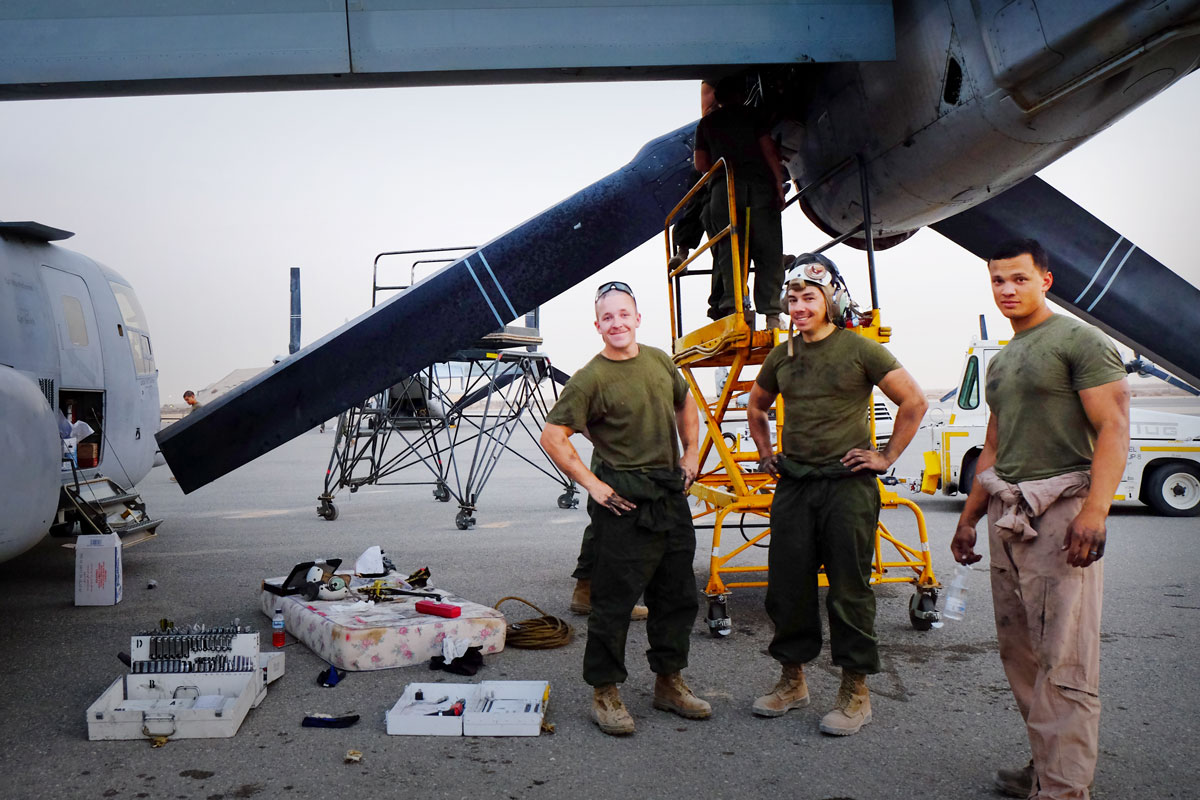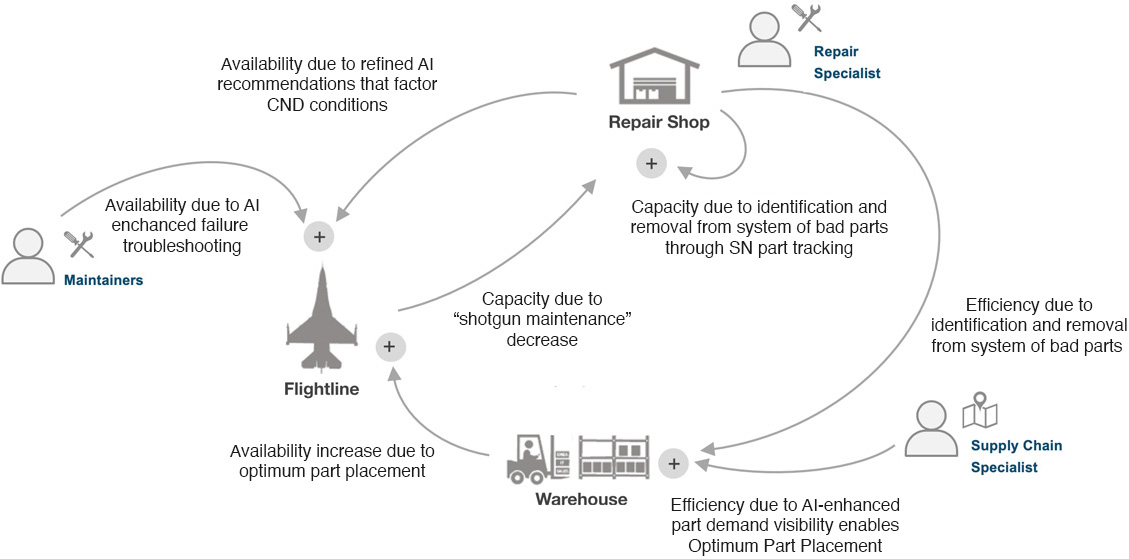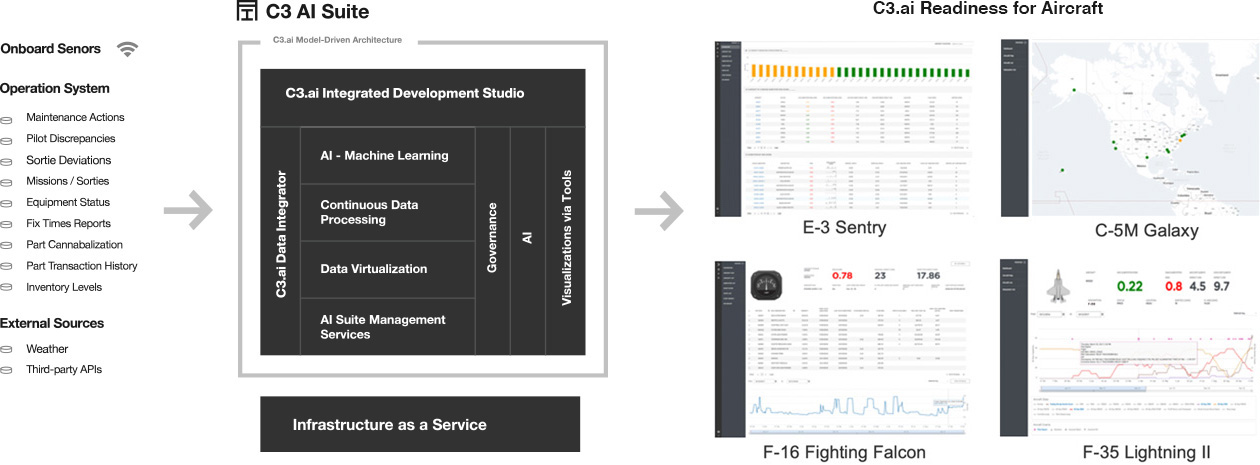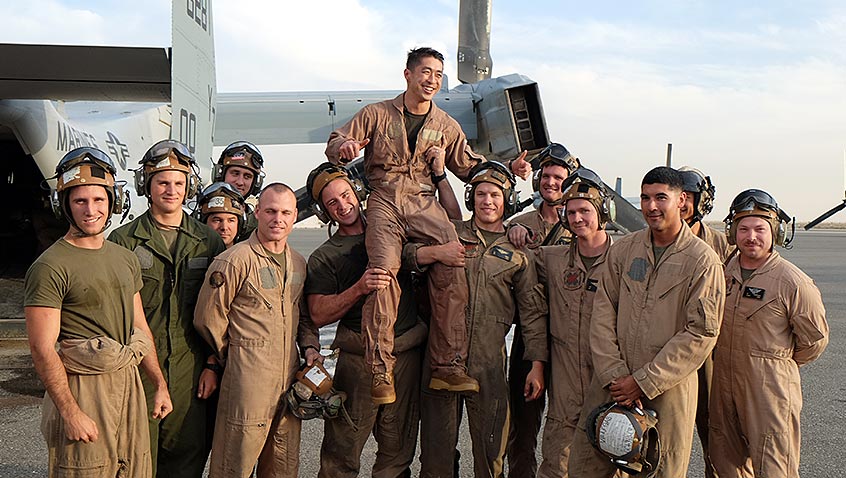As a leading provider of AI-enabled predictive maintenance applications to the Department of Defense (DoD), C3.ai has had the privilege since 2017 of helping to transform the maintenance practices for more than 1,200 aircraft on seven different platforms in partnership with the U.S. Air Force, Army, and Defense Innovation Unit (DIU).
After more than a decade on active duty with the U.S. Marine Corps as a helicopter and tiltrotor pilot, as well as a flight line maintenance officer, I joined C3.ai to help expand what I believe is a critical transformation. Let me explain why.
DoD leadership emphasizes readiness – the measure of the military’s ability to meet the demands of the National Defense Strategy. In aviation, this is a product of both aircraft mission capability and aircrew proficiency/currency – a healthy aircraft combined with a well-trained crew makes for combat mission readiness. Unfortunately, some services have aircraft mission capability as low as 40 percent, which means that fewer than half the planes in the fleet are capable of flying required missions at any given time.
In my experience the reality is that the DoD consistently relies on its aircrews to compensate for lapses in aircraft health. Student pilots must demonstrate exceptional capabilities in stress management, decision-making, and aeronautical systems before they can become fleet aviators. Because of this, pilots generally are skilled enough to avert most catastrophes, but even the most savvy crews cannot compensate for every mechanical failure.
On my last deployment in 2014, my unit was hastily deployed to the Middle East to fight ISIS, the expanding insurgent Islamic State. Weeks after our arrival, we inherited decade-old tiltrotor MV-22s and immediately began flying combat missions. Unfortunately, the aircraft had endured years of compounding mechanical wear and tear; it was not uncommon to hear stories in the ready room of our peers facing system failures during their missions. During one particularly harrowing flight, Captain Steven Herrera was faced with fluctuating gearbox oil pressure while flying in Iraqi airspace, followed by a “gearbox oil pressure low” warning, and then a subsequent “complete loss of oil pressure” indication. Usually, such a series of warnings would serve as a clear signal of impending catastrophic failure. A less experienced crew might have landed the plane as quickly as possible in unfriendly territory, but Herrera and his crew were aware of a recent trend of faulty pressure transducers within the squadron. They continued flying and landed safely beyond the Iraqi border. Unfortunately, similar events are common, and they do not always end well. I have many dear friends who faced similar situations and did not survive their mechanical failures.

Flight line maintainers similarly are required to use their experience to compensate for a lack of analytics. During that same deployment, my unit consumed swashplate drive tubes at a rate four times greater than the fleet average in similar operational contexts. Because of our collective experience and our understanding of operational context and maintenance history, we were able to observe and fix the problem. Without this collective expertise, however, the cause of shortages would have gone undiagnosed for longer, negatively impacting mission capability. There were no sophisticated AI-enabled tools to help us predict, alert, or recommend appropriate investigations.
This is why the military requires a new class of near-real-time analytical tools that augment the experience and capabilities of aircrews and maintainers. Through aggregating, analyzing, and correlating all available telemetry, operational, and maintenance data, these tools could predict failures with enough lead time to inform downstream maintenance, operations, and supply-chain requirements and processes.

Identifying Barriers to Improvement
The DoD spends $685 billion on sustainment annually, including $42 billion to support and maintain aviation. The department has long recognized the cost savings and flight safety improvements predictive maintenance can achieve. The 2007 Condition-Based Maintenance Plus (CBM+) policy for military departments and defense agencies includes efforts to shift equipment maintenance from unscheduled, reactive processes to more proactive and predictive methods driven by condition sensing and integrated, analysis-based decisions. Commercial airlines have been employing such methods for more than a decade.
But the military’s progress toward enacting these policies has been slow. I observed first-hand how the following hampered adoption of modern technology:
- High demand for digital transformation, but efforts are fragmented and siloed: Competing interests and antiquated policies stifle adoption of effective software despite clear demand and myriad examples in the commercial sector. Disparate data sources are owned by disconnected stakeholders. Supply chain and maintenance policies and processes are insulated from each other.
- Status quo is not truly AI/ML: Through my interactions with leaders in the Army, Air Force, and Navy, it became clear that adopted solutions, policies, and procedures over the last 20 years have focused on basic aggregation of historical data. Outside of prototypes and trials, there is no use of AI/ML to draw predictive insight from near-real-time sensor data in concert with historical maintenance data to inform maintenance and inventory practices.
What Predictive Solutions Require
I joined C3.ai to build systems that help overcome these barriers to adoption, deliver mission capability to warfighters, and ultimately save lives. In my experience, the following capabilities are required to provide the DoD with accurate, AI-enabled predictive maintenance recommendations:
- Platform as a service: Software should leverage today’s unique intersection between elastic cloud computing, big data, internet of things, and AI/ML advances to provide a scalable, unbounded platform that incorporates both current and future solutions.
- True prediction in near real-time: Software should allow AI/ML models to be trained on structured and unstructured data such as maintenance history, high-frequency telemetry data, and handwritten logs. Those models can be leveraged to predict and forecast subsystem failures and supply requirements.
- Rich models that provide AI-driven, action-oriented insights: Software should provide a rich user interface that offers customizable alerts for individual use cases to highlight issues and drive next steps. Software should be allowed to proactively aid maintainers and leadership in making decisions.
- Software that enables and complements highly trained technicians: Software should enhance, not usurp human judgment. A solution should complement the expertise of trained maintenance professionals and inform their decision-making by detecting anomalies and aligning maintenance and supply efforts.
C3.ai Develops Readiness Application
In October 2017, C3.ai signed a prototype development contract with the DIU to develop a predictive maintenance solution for the U.S. Air Force. The resulting application – C3 AI Readiness – since has been deployed for use with the E-3 Sentry, the C-5M Galaxy, F-16 Fighting, and F-35 Lightning II aircraft fleets.

C3 AI Readiness integrates and unifies data from aircraft telemetry sensors, maintenance, and operational systems to monitor near-real time subsystem health. The application then predicts subsystem failures, provides root cause analysis, and forecasts part demand to ensure that maintenance can be executed at the right time and place, with the right parts at hand. The DoD benefits from reduced unscheduled maintenance, optimized maintenance schedules, reduced down time awaiting parts, and reduced in-flight aborts and precautionary emergency landings.
After the successful completion of the prototype phase of the E-3, C-5M, F-16, and F-35 platforms, C3.ai signed a production contract vehicle valued at $95 million with the DIU to use the application across the Department of Defense’s aircraft fleet.
We’ve since provided the ability to predict 40 percent of unscheduled maintenance events for fixed-wing, rotary-wing, and tiltrotors alike. Additionally, the model leverages the C3.ai multi-factor Mean Time Between Failure module to also surface root-cause analysis and component level insights. The marriage between failure prediction, root-cause analysis, and inventory optimization gives maintainers the ability to inform maintenance efforts and ensure minimal down-time.
Conclusion
No matter how much emphasis we place on mission capability, aviation remains an inherently dangerous activity, particularly combat aviation. Manned aviation mishaps have spiked nearly 40 percent since 2013, and 133 service members have been killed over the last seven years. The military often requires its aviators to fly complex aircraft at the edge of the safety envelope, while also relying on its pilots to make snap decisions to compensate for in-flight failures as a result of suboptimal maintenance programs. These antiquated practices must be transformed. The DoD needs to continue leveraging AI-enabled technologies like C3 AI Readiness to provide a unified, scalable, and predictive solution to increase mission capability and reduce reliance on pilot heroics to bring broken aircraft home.




